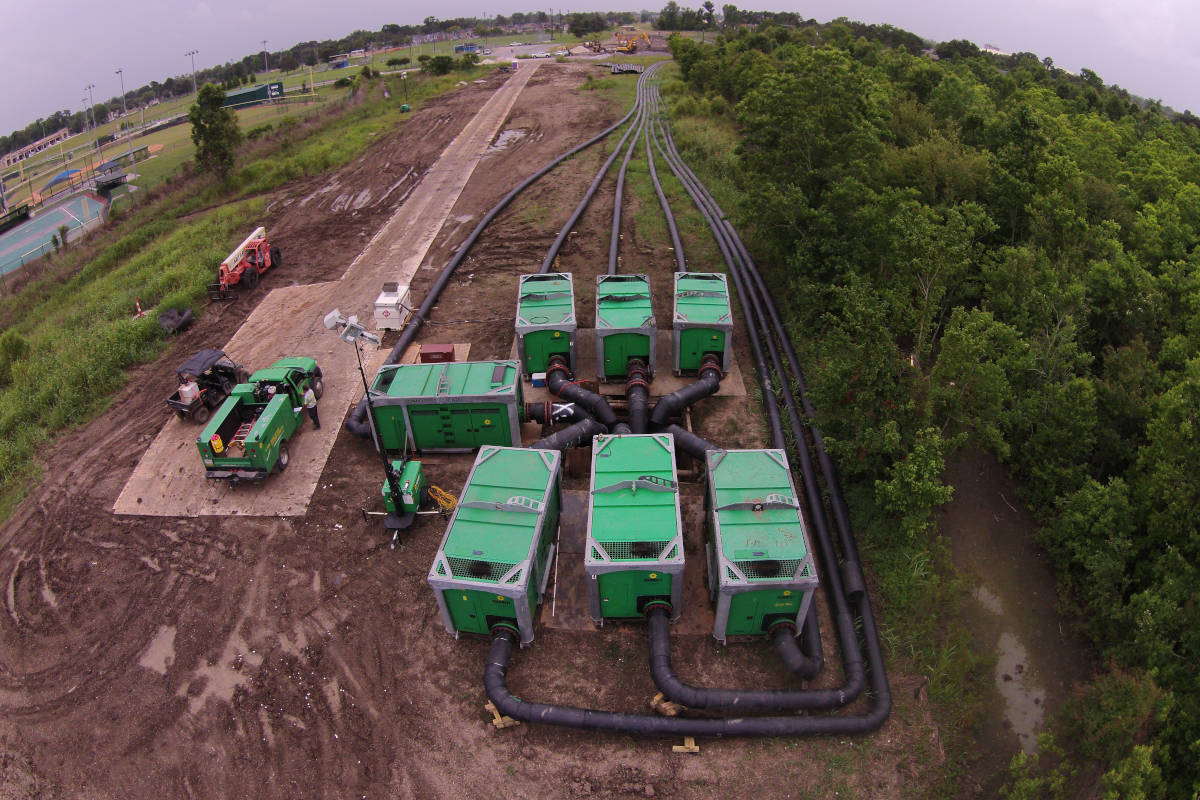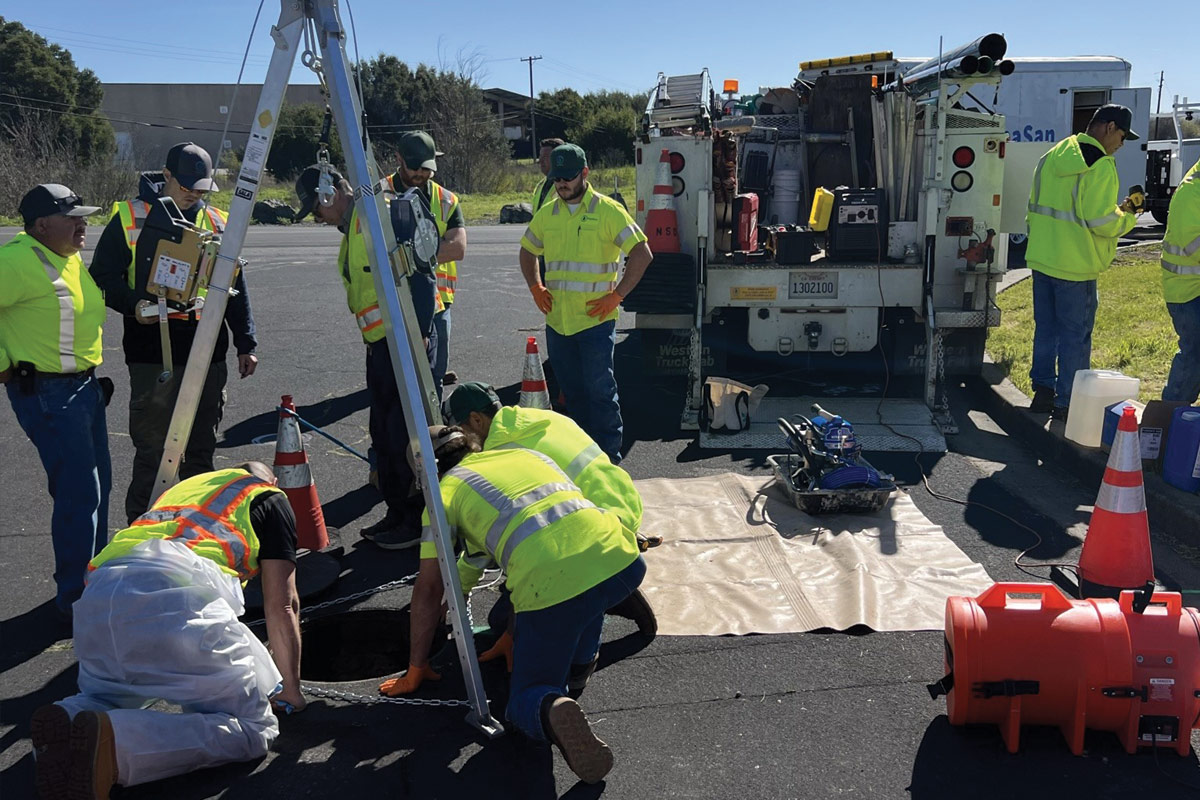
Tech Forum: Comparing One-part vs. Two-part Grout for Sewer Repair
I am often asked to discuss the differences between using one-part and two-part polymers for manhole and lateral line sealing and repair. Being a provider of both polyurethane (two-part) and permeation (one-part) grout, we understand that each grout has its strengths and weaknesses and are situationally appropriate. This article will discuss the advantages and disadvantages of using either for various sewer repair situations.
Chemical Characteristics and Definitions
Permeation grout is a direct pressure injection of a chemical fluid grout to fill spaces between soil particles without causing excessive movement or fracturing of the soil formation. The one-part grout travels through a soil profile to permeate and densify the contact soil mass with a slight expansion of 2 to 3 percent of initial volume. The permeation grout binds as an open-cell formation.
Polyurethane grout is a hydro-insensitive plural component grout that expands as a consequence of a chemical reaction. The two-part grout sets and alters the physical properties of a geologic mass, traveling through a soil profile initially by permeation and then by densification due to an expansive exothermic reaction. The polyurethane grout binds as a closed-cell formation and has expansive qualities of 15 to 22 times its initial volume.
Installation
Permeation grout utilizes a box truck and airless sprayer to deliver the grout with a wheeled gas generator. The product is pumped from a drum/pail and requires available moisture and a catalyst to cure. The one-part grout is injected through 5/8-in. diameter steel tubing at a spacing of 3- ft to 6- ft centers.
The steel tubing is driven to the lowest targeted (termination) depth in a 90 percent vertical alignment. As injection begins, the tubing is extracted during the injection and may be reused. Permeation grouting requires no monitoring for movement due to its low expansive qualities.
Polyurethane grout utilizes a fully self-contained injection rig with a 60-kW diesel generator set, a 5-hp, 23-CFM air compressor and a refrigerated dryer/regulation system. The systems use double diaphragm feed pumps and an impingement-style gun.
The ½-in. diameter steel tubing is driven down to discrete injection elevations. The multiple injection elevations result in stacked spheres of polymer with the tubing being sacrificial upon completion of injection. The tubing can be angled for void fill or centerline foundation repairs. Due to the highly expansive qualities of the two-part grout, monitoring for movement is required using a laser level.
What about Costs?
When it comes to cost, there really isn’t a comparison between permeation and polyurethane grout. This is for a variety of reasons, but the primary reason is that permeation grout takes nearly 200 to 400 percent more material than polyurethane grout, resulting in double to triple the cost.
Advantages of Permeation vs. Polyurethane Grouting
Permeation grouting has a couple of advantages over polyurethane. The major advantage is that permeation grout is considered superior in fine sands and silty environments. This is because saturation is the primary method in which the permeation grout works. Polyurethane grout is dependent on expansion and may not permeate through silty or highly plastic soil layers.
The limited expansion of permeation grout avoids over-lifting issues that polyurethane may cause. If polyurethane is “overshot,” then the polymer can damage sensitive structures such as brick manholes or dilapidated CMP.
Soil density and PSI are more consistent with permeation grout. This allows designers to provide a more predictable pressure in the treated area. When tunneling or excavating, this is a major advantage as the concentration of the grout and area of influence is highly predictable.
Advantages of Polyurethane vs. Permeation Grouting
Polyurethane is a great deal more cost-effective and is more adaptable. Although polyurethane is less effective in highly plastic and fine soils, it is highly effective in aggregates, soils with low granularity, and in filling voids. In these environments, polyurethane can provide higher pressure and compressibility than permeation grout.
Polyurethane is also not as fickle as permeation grout in regards to soil conditions. It is not dependent on moisture and is effective in highly saturated environments. Additionally, polyurethane’s cure time is faster, setting up to 90 percent density in 15 minutes whereas permeation grout requires approximately 24 hours in optimal conditions.
Adaptability is a major advantage of polyurethane. While permeation grout requires a vertical column in order to install, polyurethane can be shot both vertically and horizontally. This allows for injections to occur from inside of the lateral line, manhole or culvert. Weight is another area where polyurethane is superior, the weight difference ranging from 200 to 300 percent less than permeation grout.
Conclusion
While on paper polyurethane has more advantages than permeation grout, these advantages are still situational and to the preference of the owner/designer. The importance of these factors are to the needs of the project. Polyurethane is still a relatively new product for sewer rehabilitation applications, but it offers promising results when the benefits are understood.




